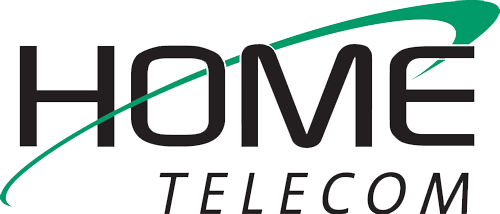
Have you ever found yourself listening to your children or grandchildren and wondering what language they are speaking? Well, you are not alone! In today’s world of technology-filled acronyms, it is hard to keep up. It seems as though society invents new, shorter words every day. Home Telecom is here to help decipher these mysterious terms and add a straightforward definition to today’s tech definitions and phrases.
Common Tech Definitions
Wi-Fi
Wi-Fi was originally Wireless Fidelity and was later shortened to Wi-Fi. This type of technology allows a variety of electronic devices to connect via a wireless network. These types of systems operate on 2.4 or 5 gigahertz bands. Wi-Fi is less secure than traditional wired connections (Ethernet).
Many devices can use Wi-Fi, including Smartphones, computers, digital cameras, tablets, video-game consoles, printers and digital audio players. A public access point for Wi-Fi is known as a “hotspot.”
Gigabyte
Gigabytes measure the size of something, such as hard drive storage. A gigabyte is a multiple of the measurement unit byte, which pertains to digital information. A giga means 109, which means that one-gigabyte equals 1,000,000,000 bytes. The symbol for gigabyte is GB. This measurement is not limited to modern technology and is common in engineering, science and business.
Gigabit
Modern technology uses gigabits to measure the amount of data per second that transfers between two points. A gigabit is a multiple of the measurement unit bit. Giga measurements are for both computer and information storage. A giga means 109, which equals 1 billion or 1,000,000,000 bits. Gb or Gbit are symbols for gigabit.
Emojis (Emoticons)
Are you ready to jump on the emoji bandwagon? Whether you are willing to take a flying leap or are only dipping your toes in to test the waters, you may be wondering what exactly is an emoji.
Emoji derives from the Japanese word that means picture. The fact that emoji is similar to the English word emotion is purely accidental.
An emoji is a smiley or ideogram that is used to text or chat online. Emojis cover a broad range of subjects, including facial expressions (think: smiley faces), places, weather, animals and everyday objects, such as apples.

Paramount Pictures
GIFs
Graphic Interchange Format, known as a GIF, is a bitmap image format. A GIF image is a type of graphic that supports up to eight bits per pixel. It can reference up to 256 different colors and supports animations.
This type of image is excellent for logos, which require sharp-edge line art and numerous color choices. GIFs are also perfect for low-resolution film clips or small animations. A GIF’s file extension is .gif.
JPEGs
Joint Photographic Experts Group, or JPEG, is a method used to compress digital images, such as photographs. They feature the filename extension .JPEG or .JPG.
Most digital cameras save photos with .JPEG extensions. .JPEG is one of the most popular formats to exchange digital pictures via the World Wide Web (WWW). This format also works well for large textual graphics, line drawings or other images that require sharp contrast.
Cache
When referring to computers, a cache is a software or hardware component that stores data. This makes it easy to recall information for future requests, thus making computers retrieve data faster. These files are typically small, as they only require temporary storage.
Many popular programs and internet browsers, such as Microsoft’s Internet Explorer, Safari, Firefox and Chrome use a temporary browser cache to recall frequently accessed websites. For example, when you click the back button in a browser, most programs will only retrieve information from the cached file, which allows the page to load quickly.
Cookie
In technology, a cookie is far from a bakery or anything to do with the iconic character on “Sesame Street.” A cookie is a small file that stores on your computer. Cookies hold a moderate amount of data that allows websites to recognize you. Cookies allow companies to customize their offerings to meet your needs.
Cookies contain different information. They save key data values, such as last names, first names, phone numbers or even credit card information. A website’s server (or computer) will read your computer’s cookie, which then helps the site retrieve data in a format that makes sites display custom information, such as ads.
